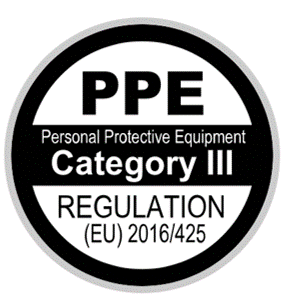
21 Feb A Brief Guide to Glove Standards and Terminology
At Solmeglas we supply a wide variety of gloves that are designed to meet your laboratory and medical needs! The available range includes latex and nitrile gloves, sterile and non-sterile gloves, and gloves of different lengths. Some of the terms used in relation to the gloves are more technical. Here is a simple guide to help you avoid the headache we all get trying to understand glove standards and complicated technical terms.
Cleanroom, it’s probably not what you think
In this case a cleanroom isn’t the result of household chores. Clean Air Technology define it as a controlled environment that has a low level of dust, airborne microbes, aerosol particles and chemical vapours, among other pollutants. Our partner Shield Scientific explains that cleanroom products are classified according to the number and size of particles permitted per volume of air.
Large numbers such as class 100 refer to Federal Standard 209E (FS 209E) and specify the number of particles ≥0.5 µm permitted per cubic foot of air. ISO 14644-1 standard uses smaller numbers which indicate the decimal logarithm of the number of particles ≥0.1 µm permitted per cubic metre of air. ISO class 5 cleanroom gloves would have at least 105 particles per m3.
On their website, Shield Scientific acknowledges that there are no internationally recognised specification limits that determine whether a cleanroom glove is ISO class 4 or ISO class 5 compatible. For this reason, SHIELDskin Xtreme™ gloves are branded according to how many times the product was washed in deionised water:
- DI: single washed in deionised water. Basic contamination control. <3000 particles per cm² ≥ 0.5 µm
- DI+: triple washed in deionised water. High contamination control. <1200 particles per cm² ≥ 0.5 µm
- DI++: washed several times in deionised water. Extreme contamination control. <850 particles per cm² ≥ 0.5 µm
Complex Design – not too complex to understand


Category III or “Complex Design” gloves protect against chemicals and microorganisms. This category covers the highest risk level: irreversible and mortal risk. According to Shield Scientific, the following references may apply to gloves in this category.
- EN 420:2003 + A1:2009 = general requirements for gloves
- ISO 375-5:2016 = terminology and performance requirements against biological risks. EN 374-2:2014 (see below) is still the basic test for assessing resistance to penetration by microorganisms according to this Shield Scientific post.
- ISO 374-1:2016 = terminology and performance requirements against chemical risks. ISO 374-1:2016+A1:2018 replaces EN 374-1:2003 such that the chemical penetration test remains the same but chemical degradation is tested for too.
An external organisation, referred to as a Notified Body, must regularly audit products in order to validate the quality assurance system used by the manufacturer. This is according to an article by Nick Gardner. Their presence is evident in the 4 digits that appear under the CE mark on glove packaging.
AQLs, pinholes and microorganism barriers

According to a Shield Scientific publication, human-borne contaminants use pinholes as passageways through gloves. Acceptable Quality Level (AQL) is a parameter for assessing the barrier performance of a glove with regard to pinholes. EN 374-2:2014 is used to test resistance to penetration by microorganisms on the basis of AQL. There are 3 levels based on AQL, outlined as follows:
| Level | AQL |
| 1 | < 4.0 |
| 2 | < 1.5 |
| 3 | < 0.65 |
With an AQL of less than 0.65 the assumption is that up to 0.65% of products in any batch have pinholes. With an AQL of less than 1.5 the assumption is that up to 1.5% of products in any batch have pinholes. This means that gloves with a lower AQL offer greater protection.
Gloves; a barrier against chemicals, viruses and electrostatic discharge
In their chemical resistance guide, Shield Scientific explain that EN 16523-1:2015 + A1:2018 is used to evaluate the chemical barrier performance of a glove. EN 16523-1:2015 is replacing EN 374-3:2003. EN 374-2:2003 shows that gloves’ resistance to penetration by chemicals and/or microorganisms was tested for.
ISO 16604:2004 procedure B and ASTM F1671-97b concern biological risk. Gloves with these references protect against contact with blood and bodily fluids. Their resistance to penetration by blood-borne pathogens is tested using Phi-X174 bacteriophage. ISO 16604:2004 procedure B is sometimes referred to as the viral penetration test. This is according to the ISO and ASTM websites.
EN 1149-1-2-3 & 5 cover electrostatic properties of the gloves. The different parts of this standard are necessary due to different fields of application and materials. According to ROOTS, part:
1 covers test methods for measurement of surface resistivity
2 concerns test methods for measurement of the electrical resistance through a material
3 involves test methods for measurement of charge decay
5 is about material performance and design requirements
Last but definitely not least: Medical Device Directives


According to Team NB, directives for medical devices and accessories specify conditions that must be met before permission is granted to apply the CE mark. There are three directives. 90/385/EEC covers medical devices which use a power supply and are left in the human body. 98/79/EEC covers products that are used in-vitro to examine substances derived from the human body. Medical device directive 93/42/EEC covers medical devices and accessories that aren’t covered by the other directives.
Based on the risk factor and intended use of the glove, it can then fall into one of four classes. Class I indicates low risk, Class II (a or b) indicate medium risk and Class III indicates high risk.
Test your understanding on our products page!


Sorry, the comment form is closed at this time.